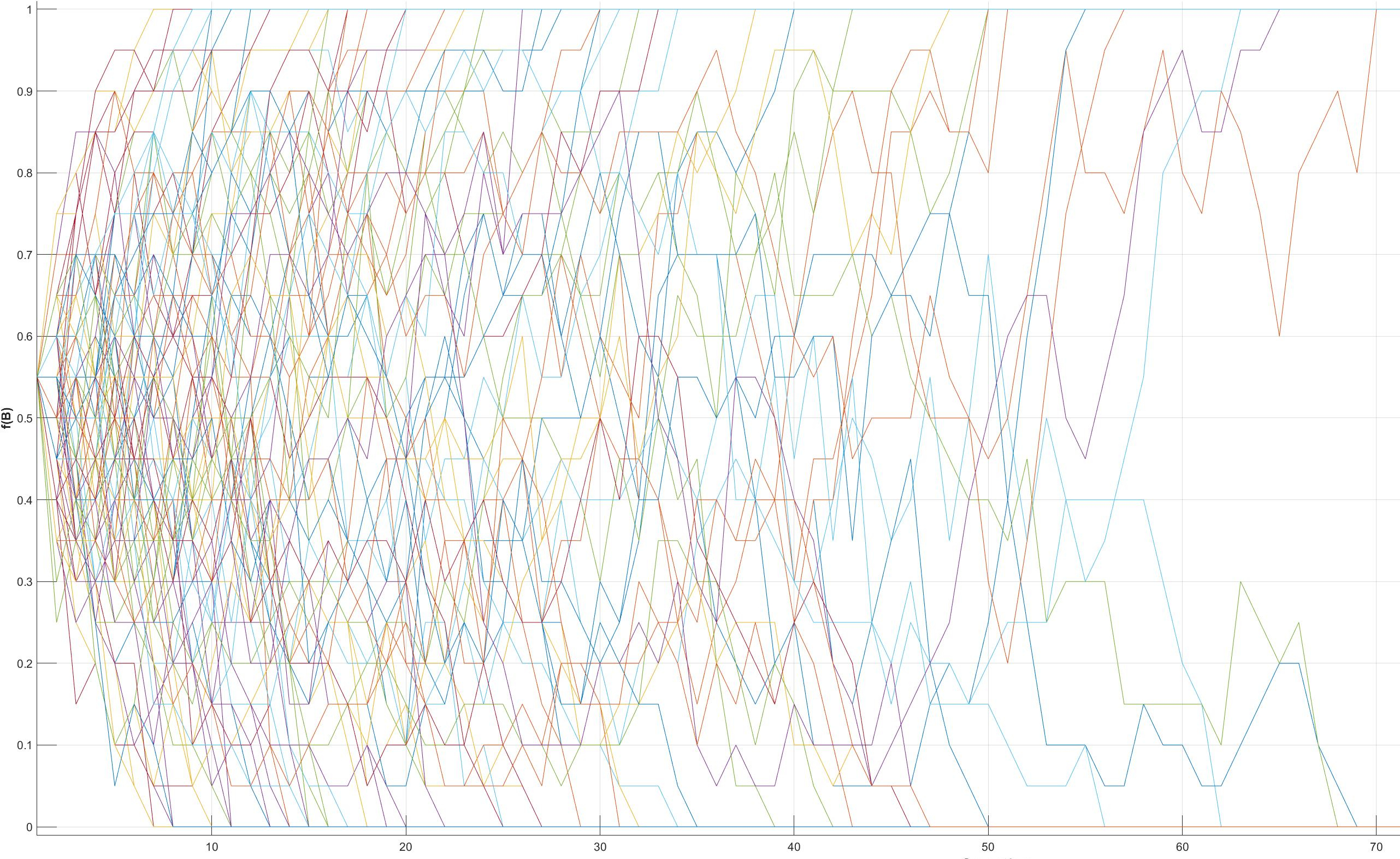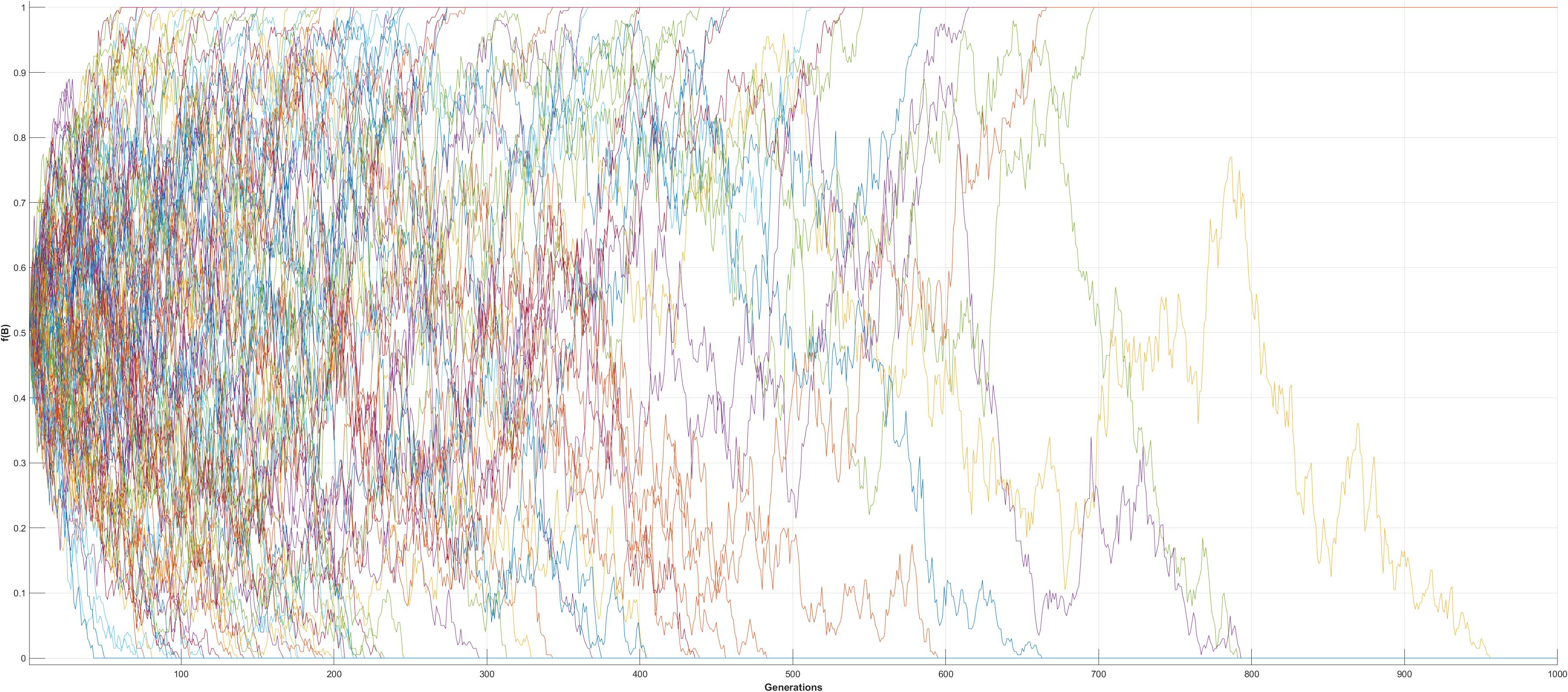

Expected behavior of neutral alleles in multiple populations
(N = 10 or 100, q0 = 0.5; W0 = W1 = W2 = 1)
In each of 100 populations,
initial f(B) = q0 = 0.5.
(1) With N = 10 @, the distribution of
population-specific q rapidly flattens
across the interval q = 0.0 ~ 1.0. Starting at Generation
6, approximately equal numbers (48 & 52) go to
loss or fixation of B within 70 generations. (2) With N
= 100 @, loss or fixation begins to occur after about
50 generations, and is only complete after nearly 1,000
generations when 49 & 51 populations have gone to loss
or fixation. Note that the last polymorphic population (in
yellow) drifts to q > 0.7 at about 800
generations before drifting to q = 0,0 at about 950
generations.
Patterns of 'random walk' in the two population sizes are similar, except that step sizes are larger in smaller population. With N = 10 individuals and 2N = 20 alleles, allele frequencies necessarily occur at intervals of 0.05, compared with 0.005 in the larger populations. Thus the 'walk' to loss or fixation is faster in smaller populations, though the ratio of
 q 'steps' up and down is the
same.
q 'steps' up and down is the
same.
Patterns of 'random walk' in the two population sizes are similar, except that step sizes are larger in smaller population. With N = 10 individuals and 2N = 20 alleles, allele frequencies necessarily occur at intervals of 0.05, compared with 0.005 in the larger populations. Thus the 'walk' to loss or fixation is faster in smaller populations, though the ratio of
 q 'steps' up and down is the
same.
q 'steps' up and down is the
same.Figure & Text material © 2025 by Steven M. Carr